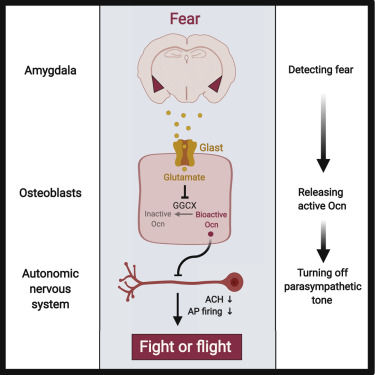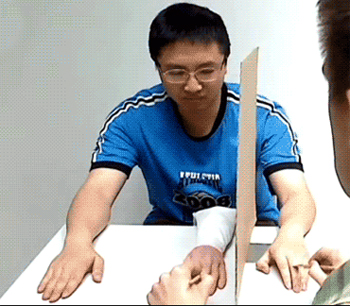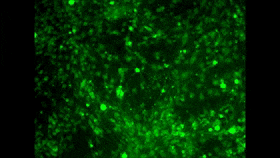Monday, 6 July 2020
Acute stress reaction initiated by a hormone secreted by the bones
 Today I’d like to tell you about an article published in the journal Cell Metabolism in September 2019. The article, entitled “Mediation of the Acute Stress Response by the Skeleton”, reports a discovery that is surprising, to say the least. Apparently, all on its own and in just a few minutes, osteocalcin, a hormone produced in our bones, can initiate the physiological changes associated with acute stress, such as increased heart rate, respiratory rate and blood pressure. (more…)
Today I’d like to tell you about an article published in the journal Cell Metabolism in September 2019. The article, entitled “Mediation of the Acute Stress Response by the Skeleton”, reports a discovery that is surprising, to say the least. Apparently, all on its own and in just a few minutes, osteocalcin, a hormone produced in our bones, can initiate the physiological changes associated with acute stress, such as increased heart rate, respiratory rate and blood pressure. (more…)
Body Movement and the Brain | Comments Closed
Thursday, 18 June 2020
Our brains have not evolved to handle so many electronic inputs

For almost all of our long evolutionary history, we human beings have lived in calm, quiet natural settings such as the African savannah in the photo below. From time to time, our attention might have been caught by a slight movement in the distant grass, or by an unusual sound such as the cracking of a branch, because either one might have signified an animal that we could hunt for dinner, or one that was hunting us for its own dinner. To survive, we had to pay immediate attention to such unexpected stimuli. Those of us who didn’t because we were just a bit too relaxed didn’t survive long enough to pass our genes on to descendants.
As a result, all of the human beings who are alive today are descended from those individuals who were the most sensitive to such sudden stimuli from the outside world. Our brains are “wired” to pay attention to these stimuli. But the problem is that the world that we have been living in for the past decade or two, with the constant flood of incoming information from the Internet, e-mail and social media, is completely different from the one that shaped the brains that we must use to respond to it. This explains the problems of attention control that I’ll be discussing in a moment. (more…)
From Thought to Language | Comments Closed
Tuesday, 19 May 2020
Neural correlates of mathematical beauty

This week I’d like to tell you about a study published in 2014, entitled “The experience of mathematical beauty and its neural correlates”.
We know that mathematicians have long talked about experiencing genuine aesthetic pleasure at the sight of certain mathematical formulas. We also know from several brain-imaging studies that activation of field A1 of the medial orbito-frontal cortex (mOFC) is one of the most common neuronal correlates of the more conventional, sense-based experience of beauty (for example, in someone’s face, or in a landscape, or in a piece of music). Hence the authors of this study (neuroscientist Semir Zeki and his colleagues) decided to investigate whether the aesthetic pleasure that mathematicians derive from such a seemingly abstract source as a mathematical formula activates this same area in their brains. And the answer seems to be yes. … (more…)
Pleasure and Pain | Comments Closed
Tuesday, 21 April 2020
The rubber-hand illusion

The sense that you have a body and can distinguish what’s part of it from what’s not is with you all the time. It’s so familiar that it’s hard to imagine not having it. Yet several experiments, such as the rubber-hand-illusion experiment described in this post, show that this sense is actually a complex construct that your brain assembles from the myriad pieces of sensory information that it receives constantly. (more…)
The Emergence of Consciousness | Comments Closed
Wednesday, 8 April 2020
Spectacular advances in two-photon microscopy and two-photon calcium imaging

What if I told you that scientists had just succeeded in recording the simultaneous activity of 12 000 neurons in the cortex of a mouse as it moved freely around its cage, and that they had done so at the cellular level, down to a frequency of 17 Hertz? Would you say something like, “So what?” or “Who cares?” or “Why don’t you tell me in language I can understand?” In this post, I’m going to try to meet that last challenge. (more…)
From the Simple to the Complex | Comments Closed







